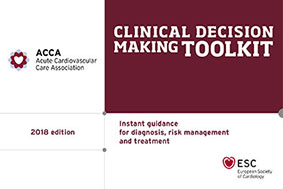Updated by Jannick A.N. Dorresteijn, 26 August 2021
The SMART (Second manifestations of arterial disease) risk score addresses the gap for estimation risk in patients with previous cardiovascular disease, including coronary artery disease (CAD), cerebrovascular disease (CVD), peripheral artery disease (PAD), abdominal aortic aneurysm (AAA) and polyvascular disease. The SMART risk score can be used to estimate the 10-year risk for myocardial infarction, stroke or vascular death in individual patients with clinically manifest atherosclerotic vascular disease (ASCVD). [1]
The SMART risk score estimations are based on easy-to-measure clinical patient characteristics. Completion of all fields is required to estimate 10-year risk. However, when the high-sensitivity C-reactive protein (hsCRP) or high-density lipoprotein cholesterol (HDL-c) levels are not available, the calculator will impute the population median instead. Choosing this option, of course, will slightly affect the accuracy of the calculator output.
The SMART risk score was developed in a population of vascular patients in the Netherlands that were included in the Secondary Manifestations of Arterial Disease (SMART)-study. [1] External validation and updating were performed in pooled trial cohorts of 18,436 vascular patients from W-Europe, S-Europe, Israel, USA, Canada, Mexico, S-Africa, Australia, and N-Zealand. [2] Among its strengths are multinational validity and hence, high generalizability, the use of standard measures, ease of use with no cost involved.
Research to date has shown significant heterogeneity in the estimated 10-year risk in patients with previous cardiovascular disease ranging from <10% to >50% risk of recurrent vascular events .
This illustrates that a single one-size approach to secondary prevention is inappropriate. [3] The identification of high-risk patients using this risk stratification tool will prompt the practitioner to engage intensive treatments and follow-up strategies, and to encourage the patients to adhere to therapy in order to achieve the risk factor targeted.
Access the SMART Risk Score tool
Download the App
The calculator is included in the ESC CVD Risk Calculation App which is available in the App Store and Google Play. Look for 'ESC CVD Risk Calculation' in your store or click on your store icon below.
or
Access online
The calculator is also available online on U-Prevent.com.




 Our mission: To reduce the burden of cardiovascular disease.
Our mission: To reduce the burden of cardiovascular disease.